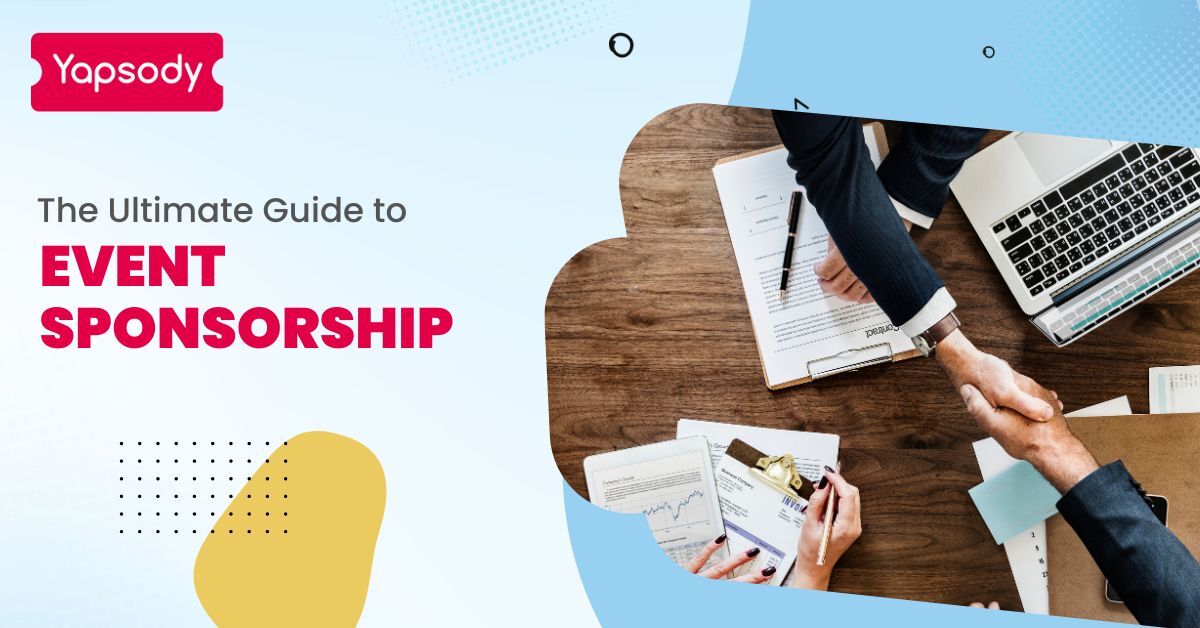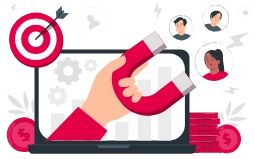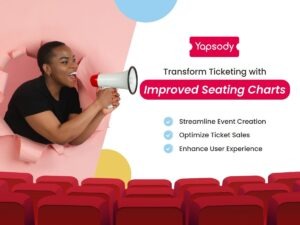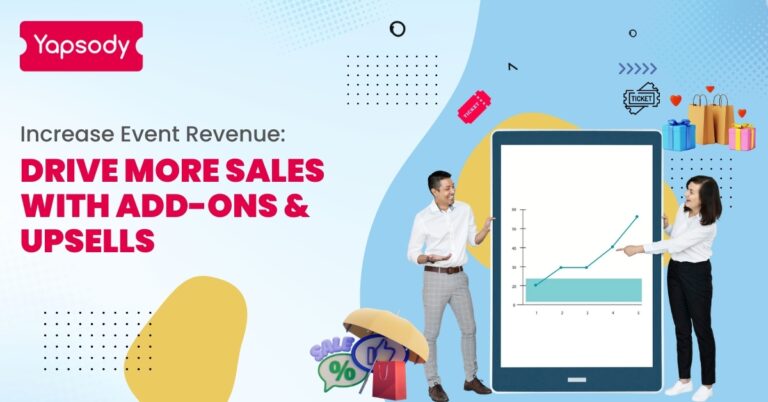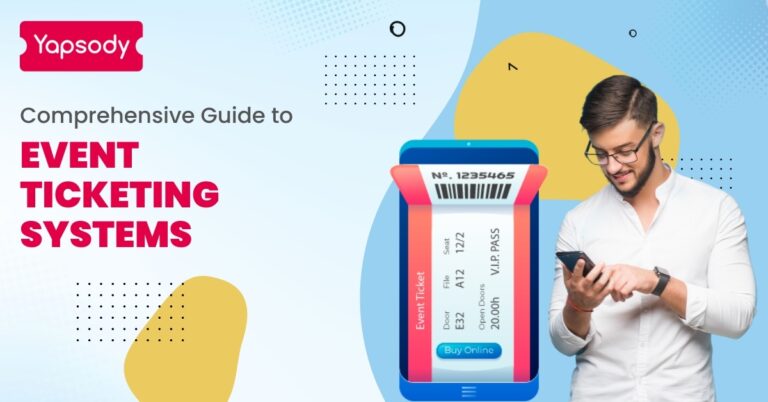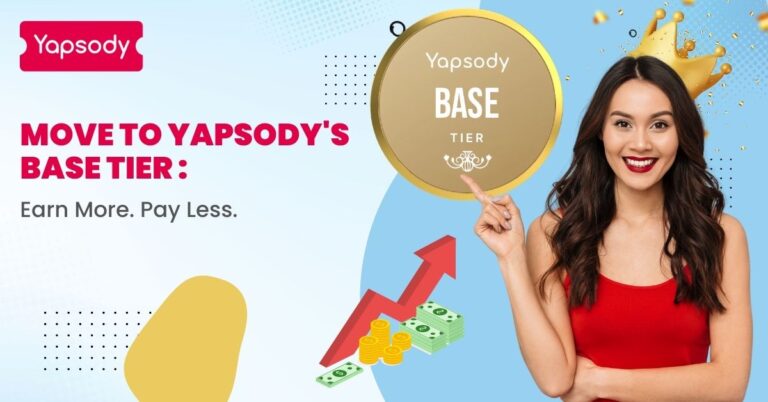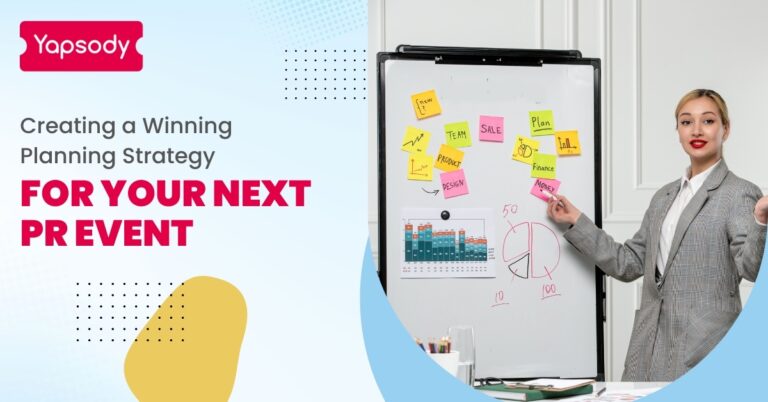Event sponsorship is a strategic partnership that benefits both the event organizer and the sponsor. For organizers, it provides crucial funding and resources, while sponsors gain visibility and the opportunity to connect with their target audience. This ultimate guide will walk you through the essential steps to secure, manage, and maximize event sponsorship.
What is Event Sponsorship?
Event sponsorship involves a business or organization providing financial or in-kind support for an event in exchange for promotional benefits. These benefits can include logo placement, speaking opportunities, product sampling, and exclusive access to event attendees.
Why is Event Sponsorship Important?
Funding: Sponsorships provide essential funding to cover event costs, enabling organizers to create high-quality experiences.
Brand Exposure: Sponsors gain significant exposure to a targeted audience, enhancing brand awareness and credibility.
Mutual Benefits: Both parties benefit from the partnership, creating a win-win situation where events can thrive and sponsors can achieve their marketing goals.
What are the Steps to Secure Event Sponsorship?
1. Define Your Event Goals
Before approaching potential sponsors, clearly define your event goals. Understand what you aim to achieve, who your target audience is, and what makes your event unique. This information will help you identify sponsors that align with your event’s purpose and audience.
2. Identify Potential Sponsors
Research companies and organizations that share a similar target audience and values. Consider the following:
Industry Relevance: Look for businesses within the same industry or those that have a vested interest in reaching your audience.
Past Sponsors: Check previous sponsors of similar events; they are often open to sponsoring similar events.
Community Involvement: Local businesses and community organizations often look for opportunities to support local events.
3. Create a Sponsorship Proposal
Your sponsorship proposal is your pitch to potential sponsors. It should be compelling, detailed, and professional. Include the following elements:
Event Overview: Provide a summary of your event, including date, location, and objectives.
Audience Demographics: Highlight key audience statistics, such as age, gender, interests, and expected attendance.
Sponsorship Levels: Outline different sponsorship packages with corresponding benefits. Offer various levels (e.g., Gold, Silver, Bronze) to cater to different budget ranges.
Benefits: Clearly articulate the benefits sponsors will receive, such as branding opportunities, media coverage, and engagement with attendees.
Call to Action: Encourage potential sponsors to take the next step, whether it’s contacting you for more information or attending a meeting.
4. Reach Out to Sponsors
Once your proposal is ready, start reaching out to potential sponsors. Personalize your approach by addressing the specific needs and goals of each potential sponsor. Use multiple channels to make contact, including email, phone calls, and social media.
5. Follow Up
Persistence is key. Follow up with potential sponsors if you don’t hear back initially. Sometimes, decision-makers are busy, and a gentle reminder can keep your proposal on their radar.
What are the Key Elements of Event Sponsorship?
Financial Support:
Sponsors provide monetary contributions that help cover event expenses such as venue costs, marketing, equipment, and other logistics.
In-Kind Contributions:
In addition to or instead of financial support, sponsors might offer goods or services. For example, a beverage company might supply drinks, or a tech company might provide AV equipment.
Promotional Benefits:
Sponsors receive various forms of promotion in return for their support. This can include logo placement on marketing materials, event signage, mentions in press releases, social media shout-outs, and more.
Brand Exposure:
Events offer sponsors a platform to reach a targeted audience, which can help increase brand awareness and generate leads. This is particularly valuable if the event attracts a large number of attendees who match the sponsor’s target demographic.
Engagement Opportunities:
Sponsors often have the chance to interact directly with attendees, either through branded booths, speaking opportunities, product demonstrations, or other interactive activities. This direct engagement can be more effective than traditional advertising.
Corporate Social Responsibility (CSR):
Sponsoring events, especially those with a charitable or community focus, can enhance a company’s reputation and demonstrate its commitment to social responsibility.
What are the Types of Event Sponsorship?
Title Sponsorship:
The sponsor’s name is prominently featured in the event’s title (e.g., “XYZ Company Marathon”). This type of sponsorship usually requires a significant investment.
Presenting Sponsorship:
Similar to title sponsorship, but the sponsor’s name is used in conjunction with the event name (e.g., “The Annual Charity Gala, Presented by ABC Corp”).
Gold, Silver, Bronze Sponsorship:
Tiered sponsorship levels with varying benefits and investment requirements. Higher tiers offer more significant promotional opportunities.
Category Exclusivity:
The sponsor is the only company from their industry represented at the event. This exclusivity can enhance the sponsor’s visibility and impact.
Media Sponsorship:
Media companies may sponsor events in exchange for advertising space, broadcast rights, or other promotional considerations.
How does event sponsorship work?
Event sponsorship is a mutually beneficial arrangement where a business or organization provides support for an event in exchange for promotional opportunities and brand exposure. Here’s a comprehensive look at how event sponsorship works:
1. Identifying Sponsorship Opportunities
Event Organizers:
Define Goals: Determine what you want to achieve through sponsorship, such as financial support, in-kind contributions, or media exposure.
Create a Sponsorship Package: Develop various sponsorship tiers (e.g., title sponsor, presenting sponsor, gold/silver/bronze sponsor) with corresponding benefits.
Potential Sponsors:
Identify Events: Look for events that align with your brand’s target audience, values, and marketing objectives.
Evaluate Opportunities: Assess the potential return on investment (ROI) based on the event’s reach, demographic fit, and promotional opportunities.
2. Establishing the Sponsorship Agreement
Proposal and Negotiation:
Sponsorship Proposal: Event organizers present a detailed sponsorship proposal highlighting the event, audience demographics, sponsorship levels, and benefits.
Negotiation: Both parties discuss the terms of the agreement, including the level of sponsorship, financial commitment, in-kind contributions, and specific promotional benefits.
Formal Agreement:
Contract Signing: A formal contract is signed, outlining the obligations and expectations of both parties, including payment schedules, deliverables, and deadlines.
3. Implementing Sponsorship Activations
Brand Integration:
Marketing and Promotion: The sponsor’s logo and branding are integrated into event marketing materials, including websites, social media, emails, posters, and press releases.
On-Site Branding: Placement of banners, signs, booths, and other branded materials at the event venue.
Engagement Activities:
Sampling and Demos: Sponsors may provide product samples or conduct demonstrations to engage directly with attendees.
Speaking Opportunities: Depending on the sponsorship level, sponsors may have opportunities to speak or present during the event.
Exclusive Offers: Sponsors can offer exclusive deals or promotions to event attendees.
4. Execution and Event Day
Coordination:
Setup: Ensure all branding materials and sponsor-provided equipment are set up as agreed.
Sponsor Presence: Sponsors often have a physical presence at the event, such as a booth or VIP area, to interact with attendees.
Engagement:
Interactive Elements: Sponsors may organize contests, games, or interactive activities to engage with the audience.
Product Placement: Strategic placement of products or services for maximum visibility and interaction.
5. Post-Event Activities
Follow-Up and Reporting:
Thank You Communication: Event organizers should thank sponsors and provide a summary of the event’s success.
Post-Event Report: A detailed report showcasing the outcomes, attendee demographics, media coverage, and ROI metrics.
Feedback and Evaluation:
Feedback Collection: Gather feedback from sponsors to understand their experience and areas for improvement.
Future Planning: Use insights and feedback to improve future sponsorships and event planning.
How To Make a Sponsorship Proposal
Creating a compelling sponsorship proposal is essential for attracting potential sponsors and securing their support for your event or initiative. Here are six tips to help you craft an effective sponsorship proposal:
1. Understand Your Audience and Goals
Audience Analysis: Clearly define your target audience demographics, interests, and behaviors. Understand what motivates them and why they would be interested in your event.
Event Goals: Identify the specific goals and objectives of your event or initiative. Whether it’s raising funds, increasing brand awareness, or driving attendee engagement, align your sponsorship proposal with these goals.
2. Tailor Your Proposal to Each Sponsor
Research Potential Sponsors: Conduct thorough research on potential sponsors to understand their brand, values, target audience, and marketing objectives.
Customize Your Proposal: Tailor your sponsorship proposal to each potential sponsor, highlighting how their brand can benefit from partnering with your event. Personalization demonstrates your genuine interest and increases the likelihood of securing sponsorship.
3. Clearly Outline Benefits and Opportunities
Highlight Sponsorship Benefits: Clearly outline the benefits and opportunities available to sponsors, such as logo placement, speaking opportunities, product sampling, and exclusive access to attendees.
Quantify Value: Quantify the value of each sponsorship opportunity by estimating the reach, impressions, and engagement it will generate for the sponsor. This helps sponsors understand the return on their investment.
4. Provide Detailed Sponsorship Packages
Offer Tiered Packages: Create tiered sponsorship packages that cater to different budget levels and marketing objectives. For example, offer gold, silver, and bronze packages with varying benefits and investment levels.
Include Pricing Information: Clearly state the cost of each sponsorship package, as well as any additional opportunities or add-ons available to sponsors.
5. Showcase Your Event or Initiative
Event Overview: Provide a compelling overview of your event or initiative, including its purpose, theme, date, location, expected attendance, and previous success stories.
Visuals and Media: Use visuals such as photos, videos, and graphics to showcase the event experience and engage sponsors visually. Visual elements can help sponsors envision their brand’s presence at your event.
6. Demonstrate Sponsorship Impact and ROI
ROI Projection: Provide data and projections on the expected return on investment for sponsors, such as estimated impressions, social media reach, and attendee engagement metrics.
Success Stories: Share testimonials or case studies from past sponsors to demonstrate the positive impact of sponsorship on their brand visibility, customer engagement, and business objectives.
How do you determine if an event sponsorship is worth it?
Determining if an event sponsorship is worth the investment requires a careful evaluation of several factors to ensure it aligns with your marketing goals, budget, and target audience. Here’s a step-by-step guide to help you assess the potential value of an event sponsorship:
1. Align with Your Marketing Goals
Define Objectives: Clearly outline what you hope to achieve through the sponsorship. Common goals include brand awareness, lead generation, product launches, customer engagement, and community involvement.
Match Goals with Event Offerings: Ensure the event’s offerings, such as audience demographics and promotional opportunities, align with your objectives.
2. Understand the Audience
Audience Demographics: Analyze the event’s audience demographics, including age, gender, location, interests, and purchasing behavior. Ensure they match your target market.
Engagement Level: Consider how engaged the audience is likely to be. An engaged audience can lead to higher brand recall and more meaningful interactions.
3. Evaluate Brand Visibility and Exposure
Brand Placement: Assess where and how often your brand will be visible. This includes logos on marketing materials, websites, social media mentions, on-site signage, and speaking opportunities.
Media Coverage: Determine if the event will attract media coverage, and if your brand will be mentioned or featured in any media outlets.
4. Analyze Cost vs. Benefits
Sponsorship Cost: Calculate the total cost of the sponsorship, including any additional expenses like booth setup, promotional materials, travel, and staffing.
Expected ROI: Estimate the potential return on investment by considering factors such as brand exposure, lead generation, and sales opportunities. Compare this with the sponsorship cost to determine if it’s financially viable.
5. Review Past Event Performance
Previous Sponsors’ Feedback: Look for testimonials or case studies from past sponsors. This can provide insights into the event’s effectiveness in delivering value to sponsors.
Event Reputation and History: Consider the event’s track record. Well-established events with a history of success are typically a safer investment.
6. Assess Engagement Opportunities
Interactive Elements: Evaluate opportunities for direct engagement with attendees, such as booth space, product demonstrations, workshops, or speaking slots.
Lead Collection: Determine if you’ll have the ability to collect attendee information for follow-up marketing efforts.
7. Measure Against KPIs
Key Performance Indicators (KPIs): Establish specific KPIs to measure the success of the sponsorship. These might include brand impressions, website traffic, social media engagement, leads generated, or sales conversions.
Tracking and Reporting: Ensure there are mechanisms in place to track and report on these KPIs during and after the event.
8. Long-Term Relationship Potential
Networking Opportunities: Consider the potential for building long-term relationships with other sponsors, event organizers, and attendees.
Future Sponsorship Opportunities: Evaluate if this sponsorship could lead to further opportunities or partnerships in the future.
9. Competitive Analysis
Presence of Competitors: Assess whether your competitors will be present at the event and how their involvement might affect your brand’s visibility and engagement.
10. Gut Feeling and Intuition
Personal Judgment: Finally, use your intuition and professional judgment. If an event feels like a good fit and aligns well with your brand’s goals and values, it’s often a strong indicator of potential success.
By systematically evaluating these factors, you can make an informed decision about whether an event sponsorship is worth the investment. This approach helps ensure that your sponsorship dollars are spent wisely and that you achieve the desired outcomes for your brand.
How much does it cost to sponsor an event?
The cost of sponsoring an event can vary widely depending on several factors, including the size and type of event, the level of sponsorship, the industry, the location, and the specific benefits offered to sponsors. Here are some key factors that influence the cost of event sponsorship:
1. Type and Size of Event
Local vs. National/International: Local events generally cost less to sponsor than national or international events due to their smaller scale and reach.
Industry-Specific Events: Industry-specific conferences or trade shows can be more expensive due to their targeted audience and specialized content.
Prestigious or High-Profile Events: High-profile events, such as major sports events, music festivals, or global conferences, usually command higher sponsorship fees.
2. Level of Sponsorship
Title Sponsor: This is the highest level of sponsorship, where the event is often named after the sponsor. It provides maximum exposure and benefits but is also the most expensive.
Presenting Sponsor: This level typically offers significant visibility and branding opportunities but is a step below the title sponsor.
Gold, Silver, Bronze Levels: These tiered levels offer varying degrees of exposure and benefits, with gold sponsors receiving more perks than silver and bronze sponsors.
Supporting/Contributing Sponsor: These levels offer basic benefits such as logo placement and mentions, suitable for smaller budgets.
3. Benefits and Exposure
Brand Placement: The cost increases with the prominence and frequency of brand placement, such as on event materials, websites, social media, signage, and merchandise.
Engagement Opportunities: Opportunities for direct engagement with attendees, such as booths, speaking slots, workshops, or exclusive access areas, can raise the cost.
Media Coverage: Sponsorships that include media exposure (TV, radio, online) typically cost more.
4. Event Location
Venue and Region: Sponsoring events in major cities or well-known venues generally costs more due to higher attendance and visibility.
Logistics: Costs can also vary based on logistical requirements, including setup, staffing, and travel.
5. Duration of Sponsorship
Single Event vs. Series: Sponsoring a series of events or an annual event can sometimes offer a better value compared to a one-time event sponsorship.
Long-Term Partnerships: Committing to long-term sponsorship agreements can sometimes result in discounted rates.
6. Industry and Market Norms
Competitive Landscape: The presence of multiple sponsors or a competitive bidding environment can drive up sponsorship costs.
Market Rates: Costs can vary by industry and market norms. For example, tech conferences might have different sponsorship rates compared to sports events.
Cost Estimates
Here are some general cost estimates for different types of sponsorship levels:
- Local Community Event: $500 – $5,000
- Regional Conference or Trade Show: $5,000 – $20,000
- National Conference or Expo: $20,000 – $100,000
- Major Sports Event or Music Festival: $50,000 – $500,000+
- Title Sponsor for a High-Profile Event: $100,000 – $1,000,000+
Conclusion
Event sponsorship is a vital component of successful event planning. By understanding your event’s goals, identifying the right sponsors, creating compelling proposals, and delivering on promises, you can secure and maintain valuable sponsorships. Remember, the key to a successful sponsorship lies in creating mutually beneficial partnerships that provide real value to both the event and the sponsor. Follow this ultimate guide to maximize the potential of your event sponsorships and ensure the success of your events. Register your event with Yapsody and start selling tickets for your events now! Connect with us to unlock the special offers for listing your events on Yapsody today!
